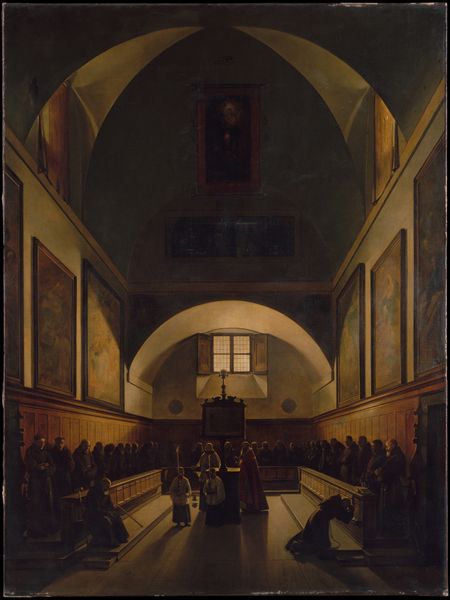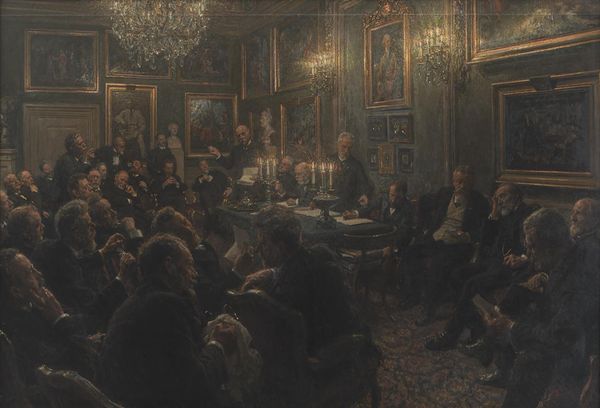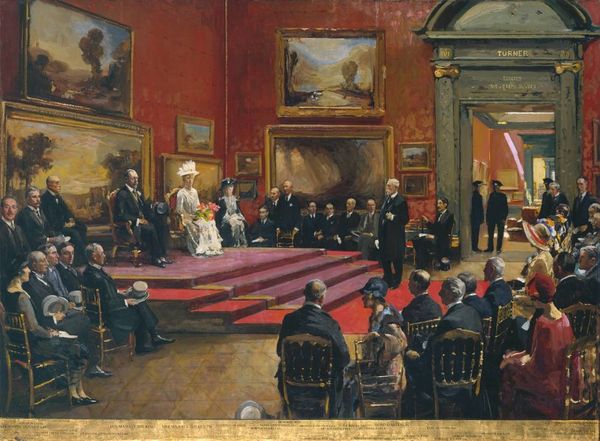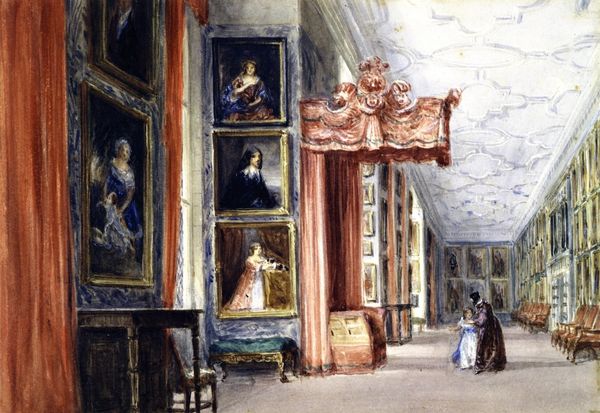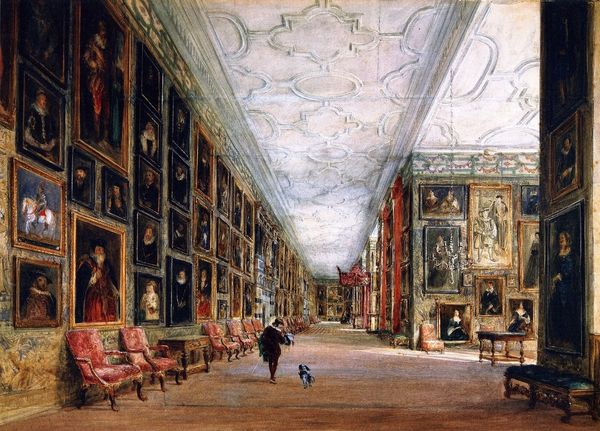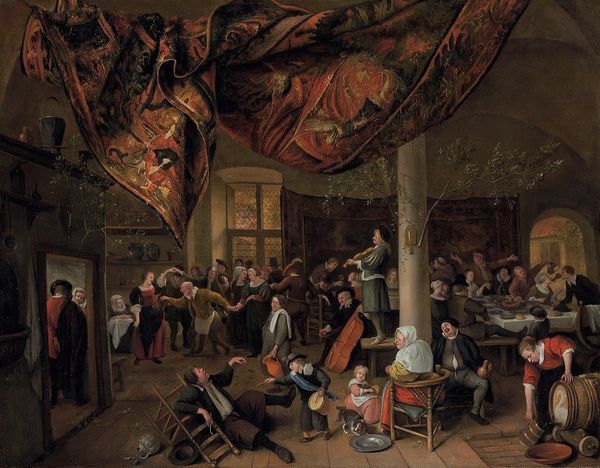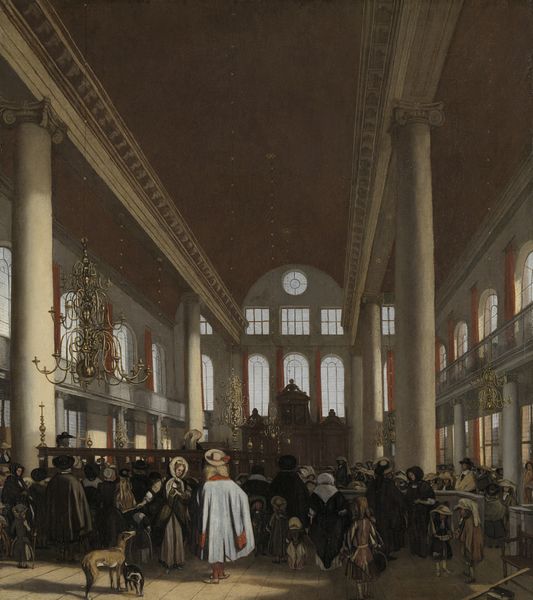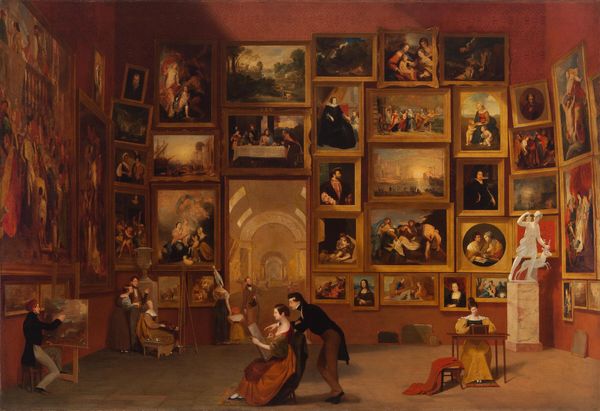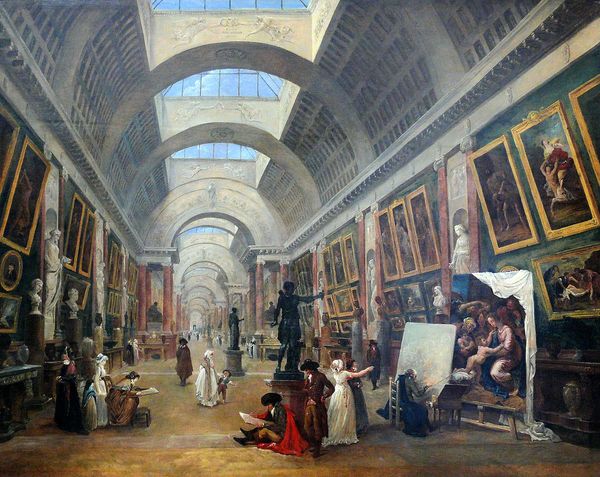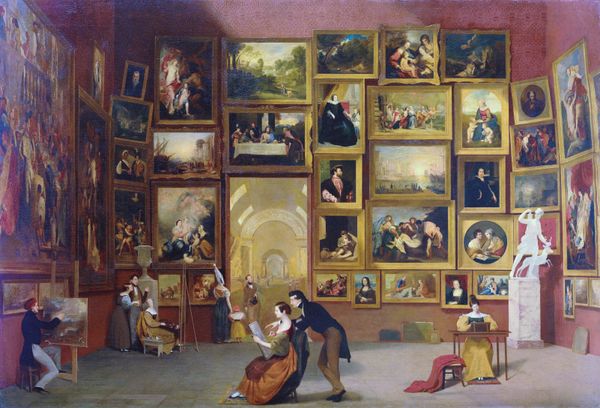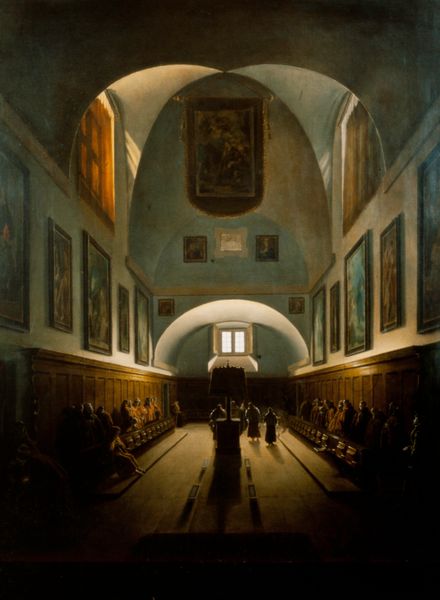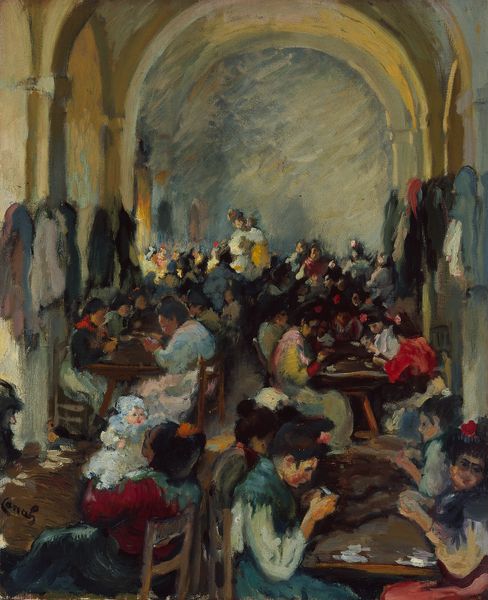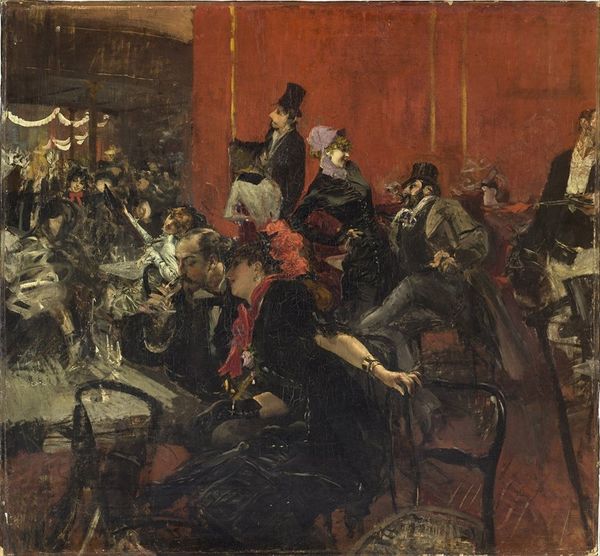
King George V, Accompanied by Queen Mary, at the Opening of the Modern Foreign and Sargent Galleries at the Tate Gallery, 26 June 1926 1926
0:00
0:00
#
glasgow-school
Copyright: Public domain
Curator: John Lavery captured a moment of art history itself in his 1926 painting, "King George V, Accompanied by Queen Mary, at the Opening of the Modern Foreign and Sargent Galleries at the Tate Gallery." It’s an oil painting documenting, as the title suggests, a rather significant royal occasion. Editor: The impression I get right away is one of being overwhelmed. Not in a bad way, but the sheer mass of people and the riot of art on the walls… It feels almost dizzying, doesn't it? Curator: It does create a sense of spectacle, certainly. I think Lavery’s choice of a slightly elevated vantage point, combined with that Impressionistic brushwork, emphasizes the throng. It’s less about individual portraits and more about capturing the essence of a cultural event. There must have been some serious staging. Editor: Definitely. Look at all of that construction, like a stage set: those rows and rows of chairs, temporarily dominating and recontextualizing all the permanent elements and paintings hung on the gallery walls... I'm immediately more interested in the process here; what materials were needed? Who provided the seating and how quickly was it manufactured and put into place? The artist, as he often does, almost distracts the viewer away from the labor involved in organizing that event. Curator: Yes, it almost feels…performative on the part of both the royals and the attendees. A grand ceremony marking the opening of the Tate's new galleries dedicated to modern art, as well as highlighting John Sargent. I can see the symbolic gesture being something particularly poignant to consider within its own cultural milieu. It is as though everyone involved understood that history was watching them. Editor: That contrast between the formal opening and the messy reality of Impressionist painting makes it extra interesting. The technique itself undermines the sense of officialdom. Curator: Exactly. Lavery employs that characteristic blurring and merging of forms that invites the eye to dance around the canvas rather than settle on any one point. Think of it: all the weight of an official historical painting treated in a style previously adopted for quick impressions of modern life. I would assume that there may even be irony intended. Editor: You are so right: irony, for sure! Curator: Overall it's a work where subject and style create an interesting tension—and, as a history piece, its appeal for future generations has lasted quite well! Editor: Right! To consider this now in our current setting and to consider those materials used gives me great pause. I love it!
Comments
No comments
Be the first to comment and join the conversation on the ultimate creative platform.
